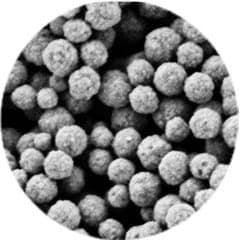What are the factors that affect the extraction of magnetic beads?
Magnetic beads play an important role in nucleic acid extraction. The specific process is to first lyse the cells, then combine nucleic acids with magnetic beads through the binding solution, and use washing solution to wash away residual protein and salt ions, and then combine nucleic acids and magnetic beads. Separate. Seeing that the process is very simple, there are actually many factors that influence it. Next, I will tell you what are the factors that affect the extraction of magnetic beads.
1. The binding capacity of magnetic beads and nucleic acid
The top priority of the magnetic bead method for nucleic acid extraction is the adsorption capacity of the magnetic beads and nucleic acid, which directly affects the yield of nucleic acid extraction. In order to improve the performance of magnetic beads for binding nucleic acids, various magnetic bead manufacturers have tried various methods, but there are no more than two types of magnetic beads on the market: ionic bond magnetic beads and covalent bond magnetic beads. Ion-bonded magnetic beads are represented by silica gel-based magnetic beads. This type of magnetic beads is more and more due to their manufacturers, and there are endless kits on the market, but the principles are similar. The other type of covalently bonded magnetic beads is the cellulose membrane magnetic beads. Both types of magnetic beads cover most of the fields of nucleic acid extraction: medical, scientific research, blood station, disease control, forensic and other fields. The products also include whole blood DNA/RNA extraction, plants, animal tissues, saliva, cells, bacteria, viruses and other samples.
2. The magnetic force on the surface of the magnetic beads
The magnetic force on the surface of the magnetic beads is also one of the factors affecting nucleic acid extraction. No matter how strong the magnetic beads are for nucleic acid binding, if the magnet has a limited adsorption capacity, many magnetic beads will be lost during operation, and nucleic acid will be lost indirectly. Because of the special nature of the cellulose film, its ability to shield magnetic properties is poor, so the magnetic force on the surface of the cellulose film magnetic beads is stronger, and it is easier to adsorb tightly near the magnetic stand.

3. Equipment operation mode
At present, there are two main types of automation equipment: magnetic rod method and suction method. Suction method, also called pipetting method, is to achieve nucleic acid extraction by fixing magnetic beads and transferring liquid. Generally, the operating system controls the robotic arm to achieve the transfer, and the nucleic acid extraction is achieved through lysis-adsorption-washing-elution; magnetic rod The method is to realize the separation of nucleic acid by fixing the liquid and transferring the magnetic beads. The principle and process are the same as the suction method, but the difference is the method of separating the magnetic beads and the liquid. The magnetic rod method is to separate the magnetic beads from the waste liquid through the adsorption of the magnetic beads on the magnetic rod, and put them into the next liquid to realize the extraction of nucleic acid.
The main factors that affect the extraction of magnetic beads are the above three types. You can refer to them when choosing magnetic beads to ensure that the magnetic beads are used well. The magnetic beads produced by Aisen Biotechnology are of excellent quality and outstanding performance. They are very helpful in nucleic acid extraction. They can bind the target substance in a short time and avoid accidental injury to the human body. Customers in need are welcome to call for consultation.



